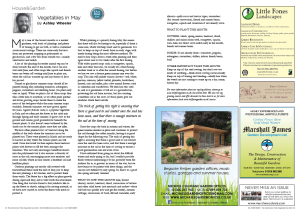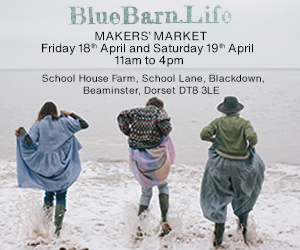
May is one of the busiest months as a market gardener, with loads of plantings and plenty of hoeing to get on with, as well as continued successional sowings. There are some early harvests from any protected cropping in polytunnels or glasshouses, and a few bits from outside too—mainly salad leaves and radish.
A lot of the planting for tender annual veg can be done towards the end of the month, but it can also wait until June, and often crops like squash and french beans are better off waiting until June to plant out, when the soil has warmed up and any threat of frost has passed.
Tunnel or glasshouse summer crops should all be planted during May, including tomatoes, aubergines, peppers, cucumbers and climbing beans (we plant early ones in April). When we plant a lot of these crops they take a little time to establish, so we often plant quicker and lower growing crops beside them to make the most of the bedspace whilst the main summer crops establish. Beneath tomatoes we have grown agretti for years. Agretti (Salsola soda) is a popular vegetable in Italy, and we often put the leaves in the salad mix through Spring and early summer. It grows low to the ground and creates good groundcover beneath the tomato plants. It also doesn’t seem bothered by the shade cast by the tomato plants once they are taller.
We have often planted rows of beetroot along the middle of the beds where the tomatoes are to be planted too. These were planted in March and are ready to harvest in May whilst the tomato plants are still small. Once harvested we then replace these beetroot plants with flowers to fill the beds amongst the tomatoes. This not only encourages beneficial insects into the polytunnels but it also ensures a diversity of roots in the soil, encouraging more root exudates and more soil life, which in turn creates a healthier soil and healthier plants.
Outdoor plantings are mostly still covered with horticultural fleece until the end of May, just to keep the new plantings a bit warmer, and to protect them from winds. The fleece has a big effect on plant growth during April and May, and is well worth the investment. One thing that we have found is that jackdaws like to rip the fleece to shreds, taking it for nesting material, so we have now started to cover the fleece with mesh to protect it.
Whilst planting is a priority during May, this means that there will also be hoeing to do, especially if there is some rain, which will help weed seed to germinate. It is best to keep on top of weeds from an early stage, with timely hoeing being the most effective method. We tend to hoe crops about a week after planting and then again about one to two weeks after the first hoeing. With wider spaced crops such as courgettes, squash, kale and other brassicas, we usually do a third hoeing another week or so after the second hoeing, but before we hoe we sow a diverse green manure mix over the crop. This mix will include various clovers—red, white, persian, crimson, yellow trefoil, phacelia, buckwheat, linseed, oats and millet, plus a few annual flowers such as calendula and cornflowers. We then hoe this seed in, and as it germinates it will act as a groundcover, protecting the soil from erosion, but also creating a healthier soil as the roots of these plants give out exudates which feed soil life.
Once the crops die back in autumn and winter, the green manure remains in place and continues to protect the soil through the colder months, leaving it in good shape for the following year. The trick of getting this right is ensuring that there is good seed to soil contact once the seed has been sown, and that there is enough moisture in the soil at the time of sowing to ensure a good germination rate and even cover.
I have refrained from going on about the difficult winter and early spring so far, but I couldn’t possibly finish without mentioning it! It has probably been the trickiest for us as growers in terms of the wet, but we have learnt to be patient with these things, and the season isn’t defined by early spring. So, here’s to a good late spring and early summer!
WHAT TO SOW THIS MONTH: kale, forced chicory, carrots, beetroot, chard, successions of lettuce and other salad leaves (not mustards and rocket—these will bolt too quickly now and get flea beetle), autumn cabbage, successions of basil, dill and coriander, early chicory—palla rossa and treviso types, cucumbers (for second succession), french and runner beans, courgettes, squash and sweetcorn if not already sown.
WHAT TO PLANT THIS MONTH:
OUTSIDE: salads, spring onions, beetroot, chard, shallots and onions from seed, courgettes, squash, corn, kale, last direct sown radish early in the month, french and runner beans
INSIDE: If not already done—tomatoes, peppers, aubergines, cucumbers, chillies, indoor french beans, basil
OTHER IMPORTANT TASKS THIS MONTH: Keep on top of the seed sowing, but don’t sow too much of anything—think about sowing successionally. Keep on top of hoeing and weeding—ideally hoe when the weeds are just starting to come up on a dry, sunny, breezy day.
For more information about our veg bag delivery scheme go to www.trillfarmgarden.co.uk/boxscheme.html. We also run veg growing courses and offer discounts to those local to us, for more information check www.trillfarmgarden.co.uk/courses




